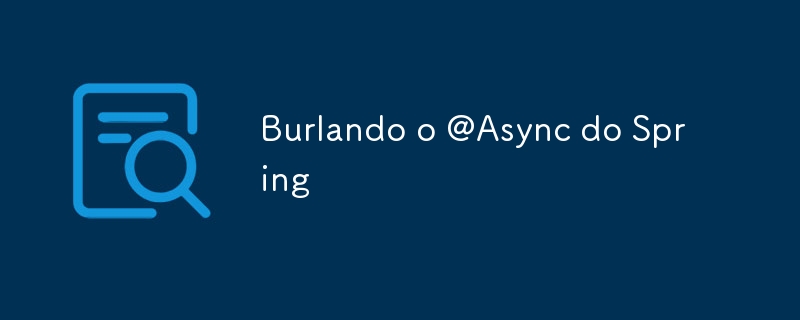

It is common when building applications using Spring, to use the @EnableAsync annotation to enable asynchronous executions and with the help of @Async over methods easily make them asynchronous.
@Async has basically two usage rules:
In the example below, there will be no compilation problems, but the method (despite being annotated with @Async) will not execute as desired.
@Slf4j
@Service
@RequiredArgsConstructor
public class HelloService {
public String get() {
log.info("Chegou!");
print();
return "Ola!";
}
@Async
@SneakyThrows
public void print() {
Thread.sleep(Duration.ofSeconds(5));
log.info("Burlado!");
}
}
And it is very common for us to wish that, because it is the responsibility of the class, the block of code that must be executed asynchronously remains in it. How to solve?
Simple!
We just need to create another class that helps, for example:
@Service
public class AsyncService {
@Async
public void run(final Runnable runnable) {
runnable.run();
}
@Async
public <O> O run(final Supplier<O> supplier) {
return supplier.get();
}
}
We do dependency injection of this bean where asynchronous execution is desirable and on top of that, we can make the method private.
@Slf4j
@Service
@RequiredArgsConstructor
public class HelloService {
private final AsyncService asyncService;
public String get() {
log.info("Chegou!");
asyncService.run(this::print);
return "Ola!";
}
@SneakyThrows
private void print() {
Thread.sleep(Duration.ofSeconds(5));
log.info("Burlado!");
}
}
This small example demonstrates the application of several concepts and resources: Inversion of Control, Dependency Injection, SOLID, Design Pattern, Functional Interfaces.
The above is the detailed content of Burlando o @Async do Spring. For more information, please follow other related articles on the PHP Chinese website!




